Customer satisfaction can make or break your business. To make sure you stay afloat in today’s hyper-competitive market, your best bet is to crank up your customer experience program and build a feedback-based organization.
That’s because negative feedback packs quite a punch. Can you believe Americans tend to tell 15 people if they experience poor service and only 11 if they experience a good one?
It feels like there is no room for mistakes, doesn’t it? To make sure you have satisfied customers, we recommend running CSAT (Customer Satisfaction Score) surveys. You’ll be able to quickly spot any detractors and appease them before they bad-mouth you.
In the following article, we’re going to answer the following question – “what is CSAT,” explain how to calculate it, and tell you why you should measure CSAT regularly. We will also share some best practices on running CSAT surveys and end with a few words on CSAT analysis.
What Is Customer Satisfaction?
Before we start, let’s define customer satisfaction.
Customer satisfaction is the term used to describe how satisfied customers are with a service, product, and any other company assets they interact with. One of the best ways of measuring it is CSAT (Customer Satisfaction Score).
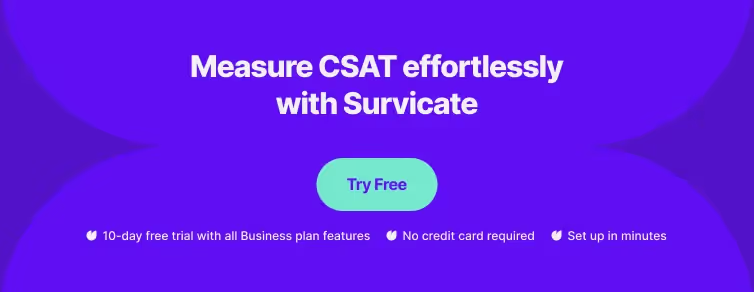
What Is CSAT?
Now, let's move on to the definition of CSAT.
CSAT stands for Customer Satisfaction Score, and, as indicated by its name, it tells you how happy your clients are with a recent experience they had with your brand. Calculating CSAT lets you predict customer loyalty and spot weak points in your customer experience program.
CSAT surveys include just a straightforward question – “How satisfied are you with your recent interaction or purchase?”. They’re quick to answer, which adds to their effectiveness (more about it later).
Customer experience surveys enjoy growing popularity. According to some recent studies of the customer service landscape, 41% of customer support professionals say that CSAT is their team’s most important KPI.
Next to Net Promoter Score and Customer Effort Score, Customer Satisfaction Score is among the most frequently used customer satisfaction metrics.
How to Measure CSAT?
To measure your CSAT, you need a survey.
Ask your respondents to give you a rating on a scale. If you look around online, you’ll come across CSAT surveys that feature 3, 5, 7, and 10-point scales, however, five is the most popular. For the sake of this piece, we’ll use this scale size as we discuss the various scores.
Most commonly, CSAT scales are displayed either as stars or smiley faces (which is where the alternative ‘smiley scale’ term comes from). Here’s an example of a CSAT survey template from Survicate.
How Is CSAT Calculated?
After you gather your responses, it's time to calculate CSAT. For that, you'll only need the number of satisfied customers – those that chose "4" or "5" on the rating scale.
The CSAT formula goes as follows: (number of 4 and 5 responses) ÷ (total number of responses) x 100 = percentage of satisfied customers.
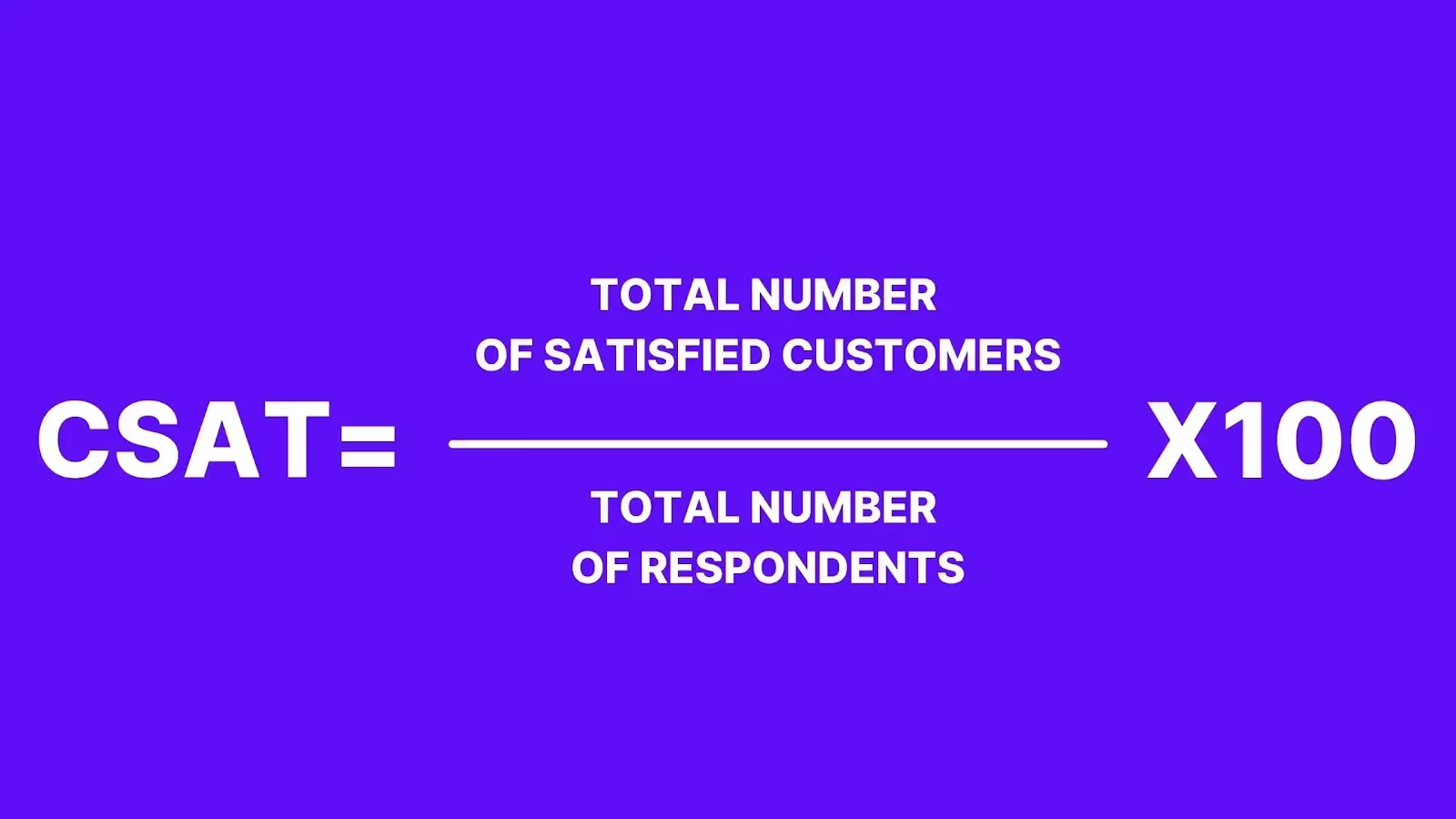
You can also automatically measure CSAT by using Survicate. You launch a CSAT survey, send it out to your respondents, and look at the CSAT score in your analytics panel as responses come in.
Your final CSAT score will be available to you upon ending the survey.
What Is a Good CSAT Score?
By now, you're undoubtedly thinking – “what CSAT score should I aim at?”. The answer is, your CSAT benchmark depends on the sector you’re in.
According to the American Customer Satisfaction Index (ACSI), the average US Customer Satisfaction Score for 2021 stands at 73.6%, translating to a 3.68 score on a 1-5 scale.
While this might not seem very high, it’s worth knowing that it’s much easier for some industries to get a high rating than for others.
For instance, if you’re in finance and insurance, it’s 76, while for telecommunications and information, it’s 72.2. If you’re in a different industry, here are a few Customer Satisfaction Benchmarks you can look at.
All in all, we recommend doing a bit of research online. As CSAT is one of the most popular methods of measuring the percentage of satisfied customers, chances are, some of your competitors will disclose their CSAT scores online.
Hilton Hotels & Resorts, for instance, has an 83% CSAT (4.15 on a 5-point scale), while Marriott has an 80% score (4.0 out of 5).
Generally, if most of your customers give you a 4 or a 5, they’re happy, and there is no reason for concern.
Anything below it might require further investigation. It’s not to say that you shouldn’t add any follow-up questions if you receive a high score – quite the opposite.
Now, you might be wondering – how can CSAT score be calculated and compared to other companies, if one goes with a 5-point scale, and another, say, a 7-point scale?
It’s simple – you look at the percentage. If your company uses a 5-star rating system and the average score is 3.75, then it translates to a 75%, universal CSAT score.
When Should You Use Customer Satisfaction Score?
There are several situations when measuring your CSAT score is a good idea. We recommend turning to CSAT solutions, particularly if you:
- Want to gain an overall understanding of your customer loyalty and the state of your customer experience throughout the customer journey
- Wish to understand how you can improve your business and what you already do very well
- Would like to compare the proportions of happy customers at your service to those of your competitors
- Have launched a new product, feature, or webinar, and want to find out how well users received it.
Customer Satisfaction Score Pros & Cons
Running CSAT surveys has both advantages and disadvantages, and we will discuss them in more detail now.
CSAT Pros
- CSAT surveys are quick and easy to answer – all it takes is a single click!
- They have high response rates (if you apply user-friendly CSAT solutions like Survicate)
- You can use it regularly to monitor how customer loyalty levels change over time. It’s convenient if you wish to measure the impact of any changes you’ve introduced. Think of things like adding new services or creating a new onboarding sequence.
CSAT Cons
- It lacks qualitative feedback. Without knowing why your clients are dissatisfied, it’s hard to come up with improvements. The good news is you can alleviate this by adding a follow-up question to your CSAT survey. For instance, if your respondent gives you a ‘2’ on a 5-scale question, you could add an open-ended question asking them to tell them what they disliked in their own words.
- It doesn’t necessarily translate to higher customer loyalty as it measures just one area or touchpoint. To check your overall client satisfaction, we recommend running CSAT together with a Net Promoter Score (NPS) survey.
Why measure CSAT? Customer Satisfaction Score Benefits
Now, time to discuss the benefits! Here are a few results you can expect by introducing CSAT surveys.
You can also check out our customer satisfaction infographic for a quick knowledge pill.
1. Verify general brand sentiment
CSAT can help you analyze your brand sentiment. If you get mostly 4’s or 5’s on a 1-5 scale, high chances are they like your services and are a source of good PR. On the flip side, if you get many 1, 2, or 3 ratings, you’re most likely not meeting customer expectations.
You’ll get even more insights if you decide to add the previously-mentioned follow-up questions, where you ask clients to explain the reason for their score in their own words.
2. Prevent customer churn
While a low number of leaving customers is no reason for concern, the situation might get serious if the churn rate continues to grow. After all, the most sustainable ways to grow a business is to increase customer retention and customer lifetime value.
The best way to prevent churn is to identify unhappy customers, reach out to them and make amends before they drop your service. By analyzing your CSAT results, you’ll see which clients you should talk to restore their trust in your business immediately.
3. Assess the effectiveness of your initiatives: sales, marketing, and customer success
If you want your business to grow, you need to experiment with new initiatives and take risks constantly. While it’s perfectly normal to make mistakes, it’s also good to know how what you did was perceived by your clients.
Let’s say you are testing a new onboarding program. Wouldn’t it be fabulous if you knew if your customer liked it before fully launching it? The good news is, you can if you run a CSAT survey to collect customer insights!
We recommend segmenting your users into various groups and selecting ones that are most suitable for testing based on your criteria. For instance, you could test out your onboarding sequence among users from the hospitality sector only.
The same goes for all your product or marketing initiatives.
4. Acquire more referrals
Receiving a high Customer Satisfaction Score is an excellent opportunity for getting referrals. According to New Voice Media:
69% of people are willing to recommend the brand to others after a satisfactory customer experience, while 50% say they’d buy from the company more often.
Identify clients who gave you a high score, and quickly get in touch with them to ask whether they’d be able to recommend you to their friends or at least write you a testimonial.
Timing plays a crucial role here, as excitement tends to fade away fast, so contact your happy customers immediately after they fill in your CSAT survey.
CSAT Survey Best Practices
Have you decided to give CSAT surveys a try? Wonderful! Here are some tips and best practices that will tread your path towards a successful customer experience research campaign.
Create a CSAT survey tailored to your use case
While there are many ways you can run customer surveys to get the highest response rate and quick results, we recommend using an online customer satisfaction tool like Survicate.
Depending on where your clients hang out and how they reach out to you, you can either run website surveys, mobile app surveys or via email surveys.
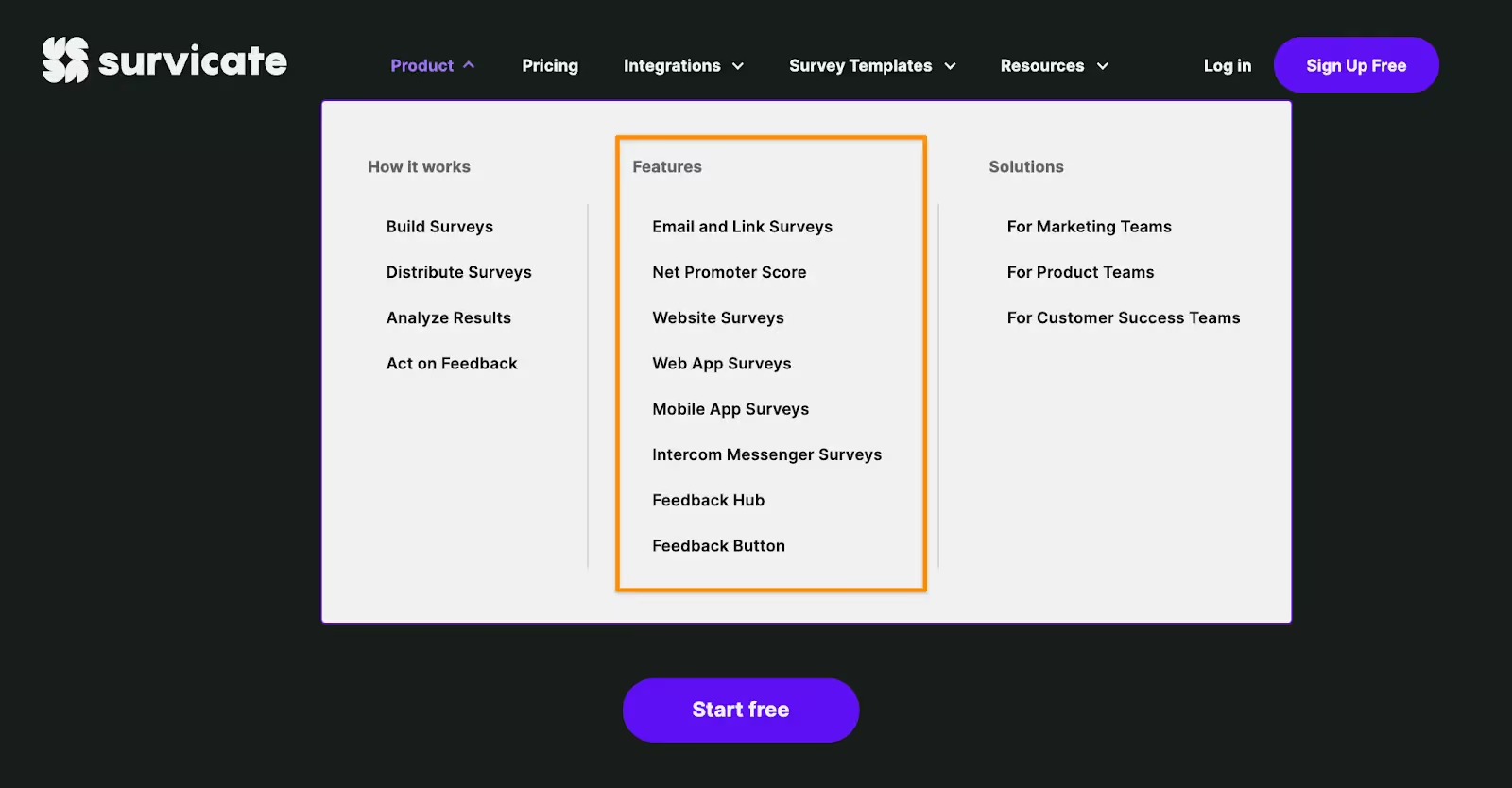
Let's discuss your options and the best timing for triggering a CSAT survey in the next point.
As mentioned above, for 1 or 2 scores on your 1-5 scale, make sure to set up a follow-up question asking – “How can we improve our services/product?”.
Do the same for those who give you 4-5 stars. Ask them, “what exactly do you enjoy in our product or service?” to learn what people love you for.
This can be excellent customer support, value-for-price, or a robust performance, among others.
Determine the right distribution channels and timing
As mentioned above, to secure high response rates, you must know how and where to ask.
Let’s discuss these two things below.
CSAT survey distribution
It’s a good practice to ask your clients to fill out a CSAT survey as they’re using the service or interacting with the exact department you want to measure.
Here are two use cases especially worth noting.
- Customer service tickets. Assuming you want to measure your customers’ satisfaction with Customer Support, you could ask your customers to fill out your CSAT survey right after a support representative resolves their query.
- Website pop-up survey. Also, if you’re looking to assess a new feature, you could have your survey pop up on the screen as they’re using it. You can surely see what we mean here!
CSAT survey timing & audience
Perfect timing is one thing. The second is knowing who’s filling out your survey. Once again, we encourage you to define customer segments – for instance, divide them per their industry, company size, time zone, or any other key characteristics.
Bear in mind that customer expectations can often shift. Some clients will show considerable interest and excitement with your tool (i.e., novice enthusiasm), which will drop once they’ve been with you for a while.
To make sure you’re assessing your client satisfaction from similar groups, you can decide to run a CSAT after onboarding, before subscription renewal, after you’ve run a webinar, etc.
Calculate and monitor your CSAT score
It goes without saying that measuring customer satisfaction only makes sense if done regularly. Collect customer loyalty-related feedback on a continuous basis.
This way, any sudden change in CSAT won’t go unnoticed, and it will be easier for you to link it to the specific changes on your site or in your organization.
And if you want to save yourself time and effort, we recommend using customer feedback software like Survicate, which will automatically calculate your average CSAT score from all respondents.
You can also take advantage of our ready-to-use templates, like the one below. You can easily embed them on your site or send them via email.
Analyze and act on the customer feedback
Simply measuring CSAT regularly is not enough.
You also have to put your findings into action if you strive for continuous improvement.We’ve mentioned it a few times already, but we’ll repeat it – to supplement your CSAT score with some qualitative data, it’s good practice to include an open-ended follow-up question.
This way, you’ll be able to develop solutions more efficiently instead of engaging in a guessing game.
Remember to share your findings with the rest of your team; after all, getting a high Customer Satisfaction Score is a team sport.
We recommend using a CSAT solution like Survicate to launch surveys tailored to your use case and automatically visualize your findings and share them with other relevant stakeholders within your company. It also lets you add follow-up questions, set up custom targeting, and distribute surveys via email, your app, or your website.
How to Analyze Your CSAT?
CSAT analysis is the last step of your customer satisfaction measuring process.
As mentioned above, there are two ways in which you can analyze your results – you can do it in the Survicate panel or dive deep into the numbers (you can refer to our dedicated resource on survey data analysis).
In the Survicate panel, you can get a quick understanding of:
- All the responses
- Total views
- Time of last response
- Completion rate
- CSAT percentage (Smiley Scale %)
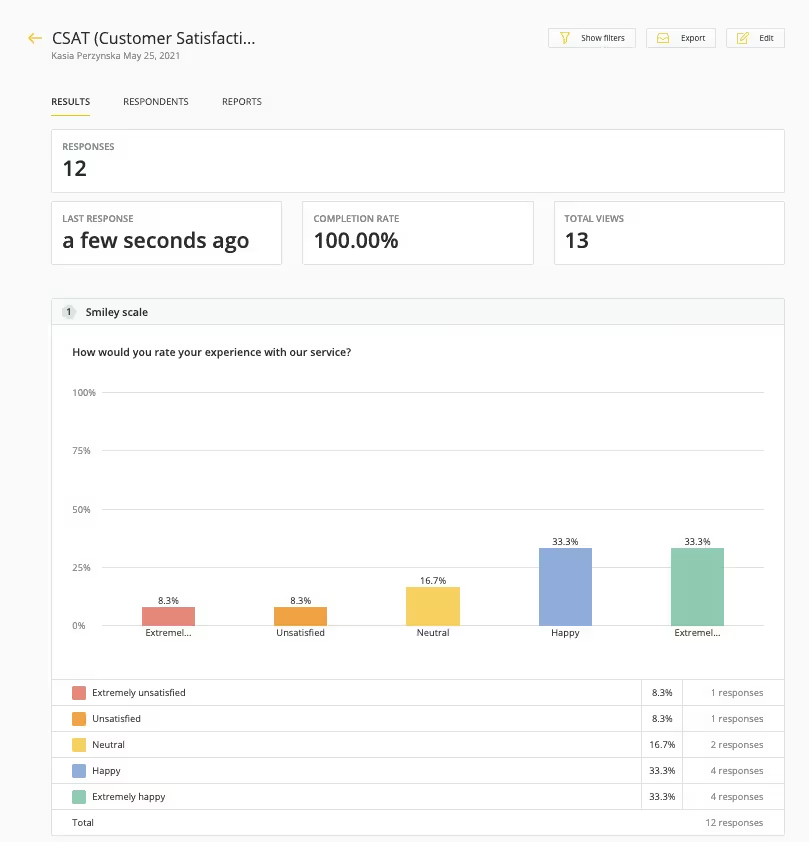
Measure CSAT with Survicate
We hope this guide has inspired you to launch your own CSAT survey and start learning what your customers really think.
Survicate is a customer feedback platform that makes it easy to run CSAT surveys at every stage of the customer journey, so you can understand general customer sentiment, spot churn risk, and see how well you fall out in comparison to your competition.
For a more complete picture, combine CSAT with other customer satisfaction metrics like Net Promoter Score (NPS) and Customer Effort Score (CES).
And remember that any survey with a CSAT question alone will only tell you your score, and not what caused each rating. If you want to know how to measure customer experience effectively, we recommend supplementing your CSAT surveys with follow-up questions to gather richer insights.
You can start with one of our ready-to-go templates or build your own survey from scratch—manually or using our AI survey builder.
Collect feedback via website widgets, in-product popups, email, mobile SDK, or shareable links—whichever channel works best for your audience. Surveys can be triggered based on behavior, specific interactions, or after support conversations.
Your CSAT score is calculated automatically, and you can instantly visualize results in Survicate’s analytics dashboard. Dig deeper with open-ended follow-up questions, and use word clouds or filters to spot trends at a glance.
Collaborate with your team by integrating Survicate with tools like Slack, Intercom, HubSpot, or Amplitude. You can also bring together feedback from other sources, like online reviews, support chats, sales calls and more into the Insights Hub, where it's all automatically organized and analyzed for you.
Start collecting CSAT feedback with Survicate and use your findings to continuously improve customer satisfaction.
Sign up for Survicate's 10-day free trial and access to all Growth plan features!
Originally published by Kasia Kowalska and Anna Rubkiewicz.

.avif)






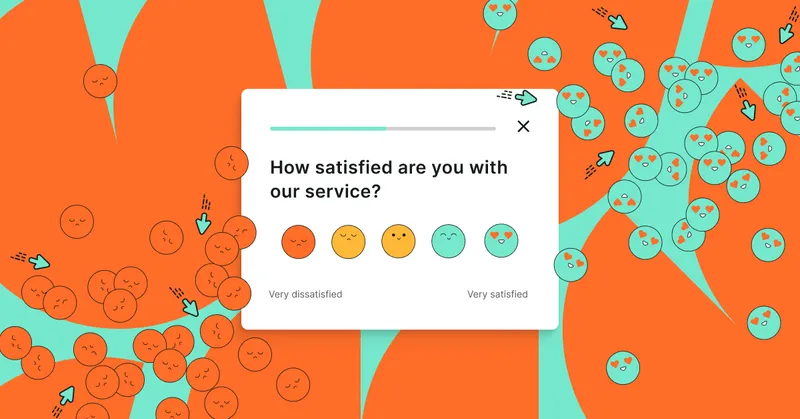
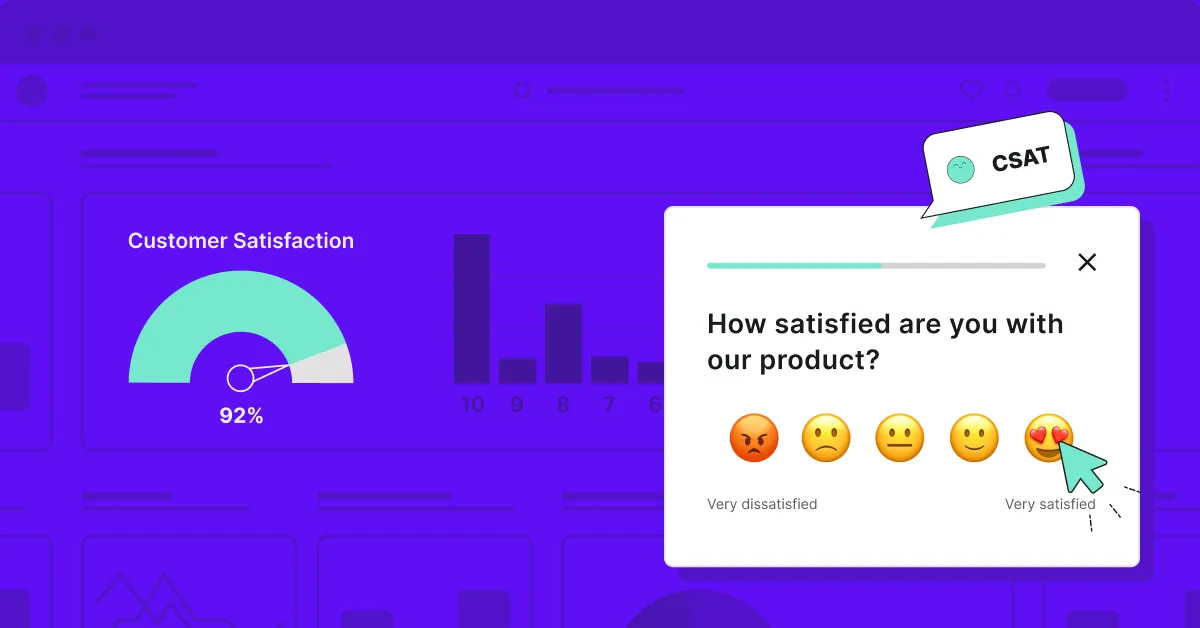
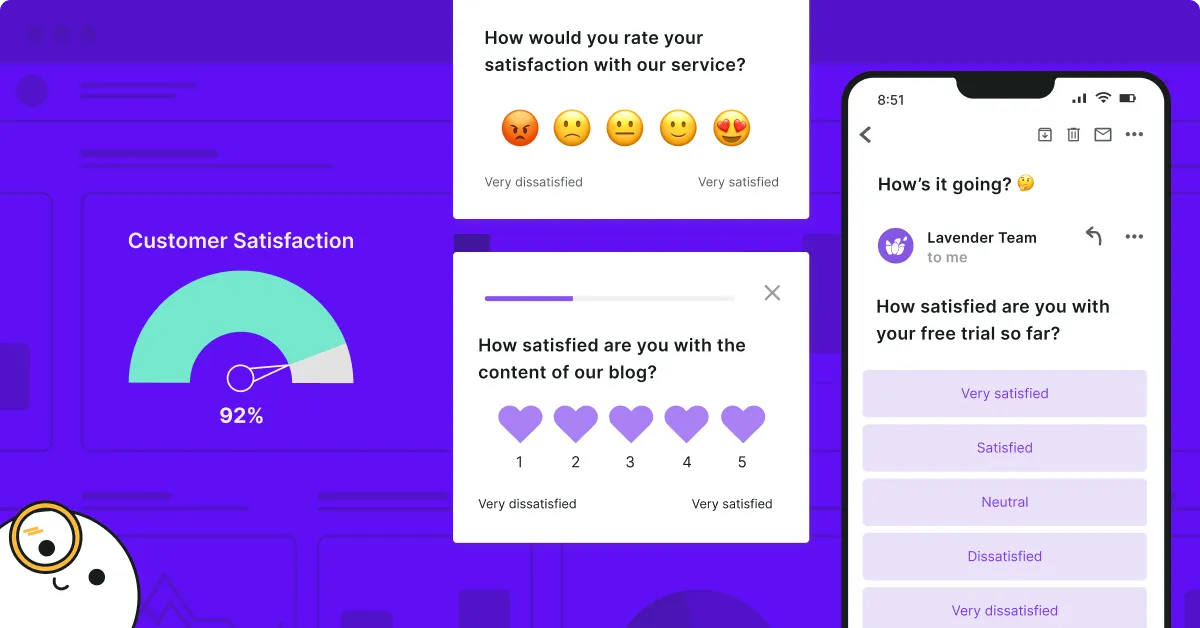
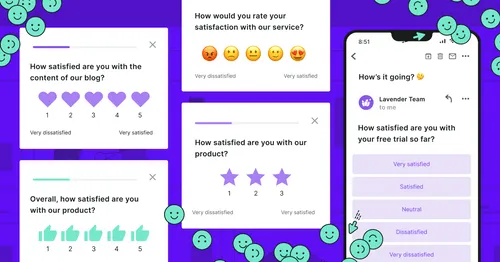
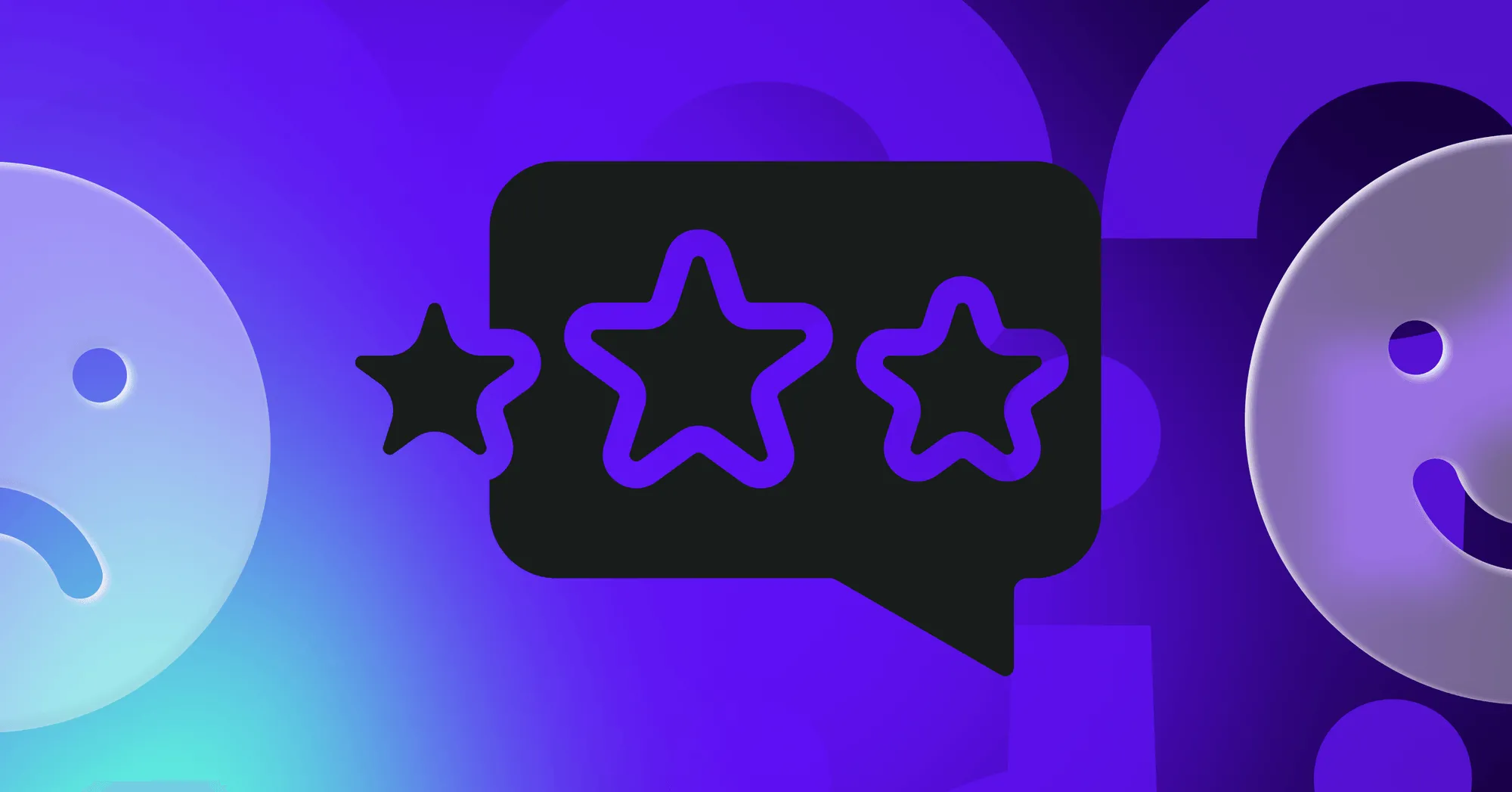
.svg)

.svg)



